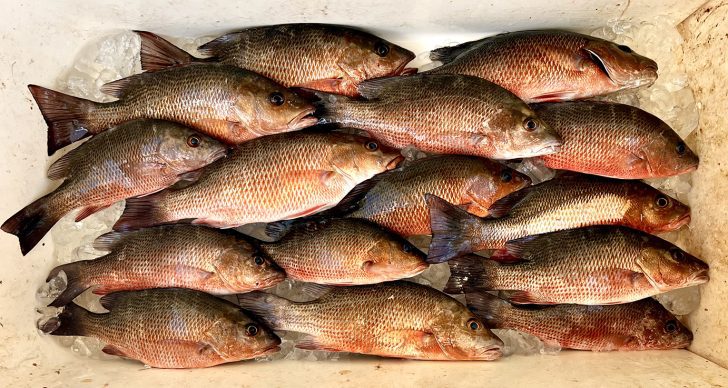Summertime Fishing vs Catching
Many people like to go fishing and target redfish–for some it’s just snook! That, my friends, can make for a long day on the water, especially in the Summer. If that person is you, well knock yourself out. I don’t have the luxury of spending hours upon hours targeting just one or two species of fish. When you run a fishing charter business, you’re expected to catch fish almost immediately. Most days I do, but some days it can be a struggle. Me, I’m going catching!
About 70% of my clientele are non-residents, so the majority of them don’t care what species they catch, as long as they have something tugging on the end of their line. So, in the Summer. I always fish where it’s the easiest–in deep water. Artificial reefs, submerged rock piles and bridge pilings are usually the most productive when it’s blistering hot outside.
The aforementioned areas are loaded with baitfish and where there’s bait, there’s fish. The majority of my catch right now consists of mangrove snapper, seatrout, weakfish, Spanish mackerel, black drum, jack crevalle, ladyfish, the occasional cobia and shark. Not all are good table fare, but they are all fun to catch. Kids, particularly, love catching any of these fish–most adults too.
I’d say about 90% of the time, my clients want to keep some fish for lunch or dinner. That being the case, I don’t even consider going after redfish or snook lately until the fish box is looking satisfactory. Even then, I ask everyone on board if they’re done catching and ready to go do some fishing?
Fry baitfish are everywhere and the biggest of the hatch are the perfect size for mangrove snapper. I nose-hook them while using a size 1 hook for the best presentation. If fishing around the bridges, I’ll freeline them close to the pilings and wait on a strike. When fishing deep-water rock piles and artificial reefs, I use just enough weight to get the bait to the bottom.
Some areas require that you get the bait very close to the structure and let it sit. When that’s the case, I do so during the last part of an incoming or outgoing tide, or when it’s completely slack. Many anglers assume that fish won’t eat if the tide isn’t moving–not true. You just have to do a little extra chumming to get the action going.

